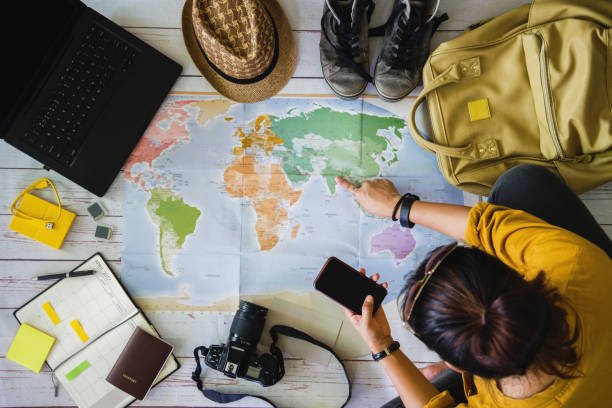India, with its diverse cultures, breathtaking landscapes, and rich history, is a dream destination for travelers worldwide. Whether you’re drawn to the majestic Taj Mahal, the serene backwaters of Kerala, or the vibrant festivals of Rajasthan, planning a trip to India requires thoughtful preparation to make the most of your experience. As India continues to evolve as a tourist hotspot in 2025, here are essential tips to help you plan your journey smoothly and enjoyably.
Understand India’s Diversity
One of the first things to recognize when planning a trip to India is the incredible diversity across the country. India is not a single destination but a mosaic of different languages, cuisines, climates, and traditions. From the snowy peaks of the Himalayas in the north to the tropical beaches of Goa in the south, each region offers unique experiences.
Understanding this diversity will help you tailor your itinerary according to your interests. Are you looking for spiritual retreats, adventure, cultural festivals, or culinary delights? Pinpointing your preferences will make your trip planning easier.
Best Time to Visit
India’s climate varies widely, so timing your trip is crucial. Generally, the best time for planning a trip to India is during the cooler months from October to March. This period offers pleasant weather across most parts of the country.
- Northern India: Best visited in the winter months to avoid the intense summer heat and monsoon rains.
- Southern India: The climate is more tropical, so winters are ideal for exploring beaches and backwaters.
- Monsoon Season (June to September): While this period brings heavy rains, it also rejuvenates the landscape, especially in regions like Kerala and the Western Ghats.
Keep in mind that festivals and peak tourist seasons can also affect availability and prices.
Visa and Travel Documents
Obtaining the right visa is an important step in planning a trip to India. Most travelers require a visa to enter India, and the process can vary depending on your nationality.
India offers e-Visa facilities for citizens of many countries, allowing for quick and convenient online applications for tourism, business, or medical visits. It’s advisable to apply for the visa well in advance of your travel dates to avoid last-minute hassles.
Also, ensure your passport is valid for at least six months beyond your planned departure date.
Vaccinations and Health Precautions
Health safety is a vital consideration. When planning a trip to India, consult your healthcare provider about recommended vaccinations such as hepatitis A and B, typhoid, and tetanus. Depending on the regions you plan to visit, you might also need protection against malaria or Japanese encephalitis.
Drink only bottled or filtered water and avoid raw or street food if you have a sensitive stomach. Carry a basic medical kit with essentials like rehydration salts, antiseptics, and any personal medications.
Plan Your Itinerary Wisely
India’s vastness means you cannot see everything in a single trip, so planning your itinerary wisely is key. Focus on a few regions to explore in-depth rather than trying to cover the entire country.
Popular circuits include:
- Golden Triangle: Delhi, Agra, and Jaipur—perfect for first-timers interested in history and culture.
- Rajasthan: Explore palaces, deserts, and vibrant markets.
- Kerala: Backwaters, Ayurveda, and hill stations.
- Himalayan Regions: Himachal Pradesh, Uttarakhand, and Ladakh for nature lovers and adventure seekers.
Booking guided tours or customized travel packages can help optimize your time and provide local insights.
Transportation in India
India’s transportation network is extensive but can be overwhelming for new visitors. When planning a trip to India, consider your options carefully:
- Domestic Flights: The fastest way to cover long distances between major cities.
- Trains: India’s rail network is one of the largest in the world. Traveling by train offers an immersive experience but requires advance booking.
- Road Trips: Hiring a private car with a driver is a popular way to explore regions at your own pace.
- Local Transport: Auto-rickshaws, taxis, and app-based cabs like Uber and Ola are widely available in cities.
Plan your routes based on convenience, budget, and time constraints.
Accommodation Choices
India offers accommodation options ranging from luxury hotels and heritage palaces to budget hostels and homestays. Your choice will depend on your travel style and budget.
When planning a trip to India, consider staying in boutique hotels or heritage properties to get a more authentic experience. Homestays also provide a chance to connect with local culture and cuisine.
Booking platforms and travel apps make it easier than ever to find accommodations that suit your preferences.
Cultural Etiquette and Safety Tips
India is a land of rich traditions, and respecting local customs will enhance your experience. Dress modestly, especially when visiting religious sites. Always ask permission before photographing people, particularly in rural areas.
Safety-wise, India is generally safe for tourists, but common precautions include avoiding isolated areas at night, keeping valuables secure, and staying alert in crowded places.
Embrace the Local Cuisine
Indian cuisine is famous worldwide, but it varies widely across regions. When planning a trip to India, don’t miss trying local dishes such as Rajasthani thali, South Indian dosa, or Bengali sweets.
If you have a sensitive stomach, start with cooked food from reputable restaurants and gradually explore street food.
Staying Connected and Getting Around
Having mobile connectivity and internet access is essential. Purchasing a local SIM card upon arrival is inexpensive and convenient.
Also, use navigation apps and translation tools to assist your travel. Many areas are tourist-friendly, but language barriers can exist in remote regions.
Final Thoughts
Planning a trip to India in 2025 is an exciting endeavor filled with endless possibilities. By preparing carefully, respecting local culture, and choosing destinations aligned with your interests, you can enjoy a memorable and enriching journey.
India’s diversity, warmth, and spirit make it a place where every traveler finds something unique. Whether it’s your first visit or a return trip, thoughtful planning will help you unlock the best experiences this incredible country has to offer.



